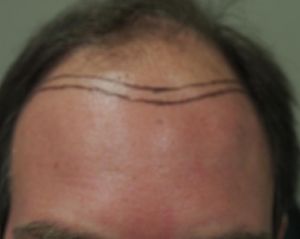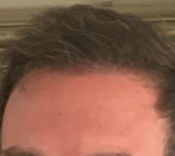If you are considering putting hair back where you lost it by having a hair transplant, the big decision is to take the step of finding a caring, competent doctor working with an experienced team, followed by scheduling a hair transplant. For most men, scheduling a hair transplant is the greatest step, in other words, to fix a problem with a surgical solution.
Fortunately, the hair transplant procedure has been made absolutely undetectable today, contrary to the 1990s, when everyone could see a hair transplanted patient and know it was not normal. Today, normalcy is the rule in the hands of an excellent hair transplant surgeon who has developed an excellent surgical team that has been fine-tuned over many years.
Most cosmetic surgeries only require the skills of a single surgeon, but all hair transplant surgeries require the skills of a great surgeon who built a great team to work with. A great surgeon with a poor team will produce poor results. A bad surgeon with a great team will also produce poor results. Why am I saying this when everyone thinks that the surgeon is the key to a good hair transplant? It is because a good hair transplant requires a skilled surgical team that understands quality control systems, similar to great manufacturing operations. When the team produces 2,000 grafts, it is a team effort that works under strict quality systems rules.
Once you take the plunge in deciding if you should go for a hair transplant, the next step is to find the best doctor with the best team that knows how to work together. Then, you need to decide if you should want a strip surgery (FUT) or FUE.
The FUT procedure (Follicular Unit Transplant) harvests a batch of hair by cutting a strip from the back of the head. The strip of hair is then dissected into their natural family groups with a large team of technicians working with high powered microscopes. Both I and my wife and daughter-in-law had strip surgeries, and we have undetectable scars.
On the other hand, the FUE procedure (Follicular Unit Excision) is a hair transplant procedure that harvests the hair follicles in singular hair groupings. FUE is a great procedure that I pioneered. But contrary to most young men’s belief that FUE is better than a strip procedure (FUT) because it does not scar, this is not the case. Many doctors would like you to believe that FUE is a scarless surgery, but take a look at the type of scars a large FUE session can create. Scars are a complication when FUE is performed on a person with low donor density and is unable to support a large number of FUE grafts. Many patients found out the hard way by getting 3,000-6,000 FUE grafts without having an assessment of their donor density performed prior to their surgery. As a result, over-harvesting has become far more common than you might expect. I love doing FUE and half of all of the surgeries we do today are FUE hair transplants, but for those of you who are reading this post, please note that anything done well in moderation may be good/ . Likewise, FUE done in moderations is a great surgical hair transplant procedure. However, when done in excess, the patient pays the price with ugly scarring that may never have been anticipated. Certainly, the unfortunate man in the photo below had no idea that his FUE was a massively scar-producing surgery because his doctor over-harvested grafts.


